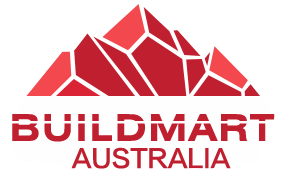Artificial grass has emerged as a popular alternative to natural lawns, offering a lush, green landscape without the hassle of constant maintenance. Its aesthetic appeal, durability, and water conservation benefits make it an attractive choice for homeowners and businesses alike. However, the key to a successful and long-lasting artificial grass installation lies in the preparation of the ground beneath.
Why does the ground need to be prepared for artificial grass?
The ground preparation for artificial grass is a critical step in ensuring a successful and long-lasting installation. Several key reasons highlight the importance of preparing the ground adequately:
Even Surface
A level and even surface is essential for the aesthetic appeal of artificial grass. Without proper preparation, the ground may have bumps, dips, or uneven areas, leading to an unnatural and unattractive appearance.
Drainage
Proper drainage is crucial to prevent water accumulation on the surface. The base layer beneath the artificial grass allows for efficient water drainage, preventing puddles that could potentially damage the turf and create an environment conducive to pests and mold growth.
Stability and Durability
A well-prepared base provides stability for the artificial grass, ensuring it stays in place and maintains its shape over time. This stability contributes to the overall durability of the installation, preventing issues such as wrinkles, folds, or sagging.
Weed Prevention
The base layer, often consisting of crushed stone aggregate and a geotextile membrane, acts as a barrier against weed growth. Without this protective layer, weeds can penetrate the artificial turf, causing aesthetic issues and potential damage.
Optimal Performance
Artificial grass is designed to mimic the look and feel of natural grass while offering additional benefits such as low maintenance. Proper ground preparation ensures that the artificial turf performs optimally, providing a comfortable and enjoyable surface for various activities.
Longevity of the Installation
Investing time and effort into preparing the ground sets the foundation for a long-lasting artificial grass installation. A well-prepared base helps prevent issues such as subsidence, which can compromise the integrity of the turf over time.
Ground preparation for artificial grass is not just a preliminary step; it is a fundamental aspect of ensuring the functionality, aesthetics, and longevity of the synthetic turf. Taking the time to properly prepare the ground pays off in the form of a beautiful, stable, and resilient lawn that requires minimal maintenance and stands the test of time.
What do you put underneath artificial grass?
Underneath artificial grass, a well-constructed base layer is typically installed to provide stability, drainage, and support for the synthetic turf. The key components that are commonly put underneath artificial grass include:
Crushed Stone Aggregate
The base layer often starts with a foundation of crushed stone aggregate. This material provides stability, prevents uneven settling, and facilitates proper drainage. It creates a firm surface for the artificial grass to rest on, ensuring a level and even appearance.
Geotextile Membrane
Placed on top of the crushed stone, a geotextile membrane is used to prevent weed growth. This permeable fabric acts as a barrier, inhibiting the growth of weeds and roots that could otherwise penetrate the artificial turf. It helps maintain the cleanliness and integrity of the synthetic grass.
Sharp Sand
A layer of sharp sand is often spread over the geotextile membrane. This sand layer helps to further level the surface and provides additional support for the artificial grass. It aids in the proper installation of the turf, ensuring a smooth and even finish.
Shock Pad (Optional)
In some installations, especially those intended for sports or play areas, a shock pad may be added above the sharp sand. The shock pad enhances the cushioning and impact absorption of the artificial grass, providing a safer surface, particularly in areas where falls are more likely.
Turf Pins or Nails
Turf pins or nails are used to secure the edges of the artificial grass to the ground, preventing shifting or movement. These are typically inserted around the perimeter of the turf and at intervals within the field to ensure a secure and stable installation.
The combination of these layers creates a well-prepared base that addresses various aspects, including drainage, weed prevention, stability, and support. It’s important to note that the specific components and their thickness may vary based on the project requirements, the type of artificial grass being used, and the intended use of the space. Properly preparing the ground underneath artificial grass is crucial for the overall performance and longevity of the synthetic turf installation.
What happens if you skip the base layer for artificial grass?
Skipping the base layer is akin to building a house on a shaky foundation – it might look good initially, but problems will inevitably arise. Without a proper base, the artificial grass may become uneven, leading to visible lumps and bumps. Additionally, inadequate drainage can result in waterlogged areas, fostering mold and mildew growth that can damage both the turf and the ground beneath. In the long run, skipping the base layer compromises the integrity of the entire artificial grass installation.
What tools are needed to install an artificial grass base?
Installing an artificial grass base requires a set of essential tools to ensure a seamless and professional finish. These tools typically include a turf cutter, a compactor for the crushed stone aggregate, a geotextile membrane to prevent weed growth, and a spreader for the sharp sand. Additionally, a spirit level, a rake, and a sturdy wheelbarrow are indispensable for achieving a smooth and even surface.
In conclusion, while the vibrant green surface of artificial grass may steal the spotlight, the success of any installation lies in the preparation of the ground beneath. A meticulously crafted base layer not only enhances the visual appeal of the artificial turf but also contributes to its longevity and performance, making it a worthwhile investment for those seeking a lush and low-maintenance lawn. So, before rolling out that vibrant green carpet, take the time to lay down a solid foundation for a landscape that stands the test of time.
